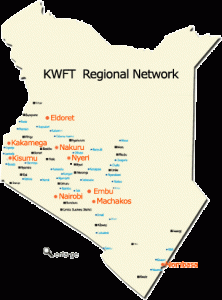May and June are the seasons for corporate annual general meetings (AGM), but I’m yet to attend any except from one for a savings & credit society (SACCO).
SACCO’s: are getting more recognition in acknowledgement of their significant deposit holdings and loan portfolios and now have a new regulatory agency to oversee the sector.
In a variation from corporate AGM’s, at a SACCO one members have to first approve the chairperson’s report, supervisory report, accounts and budget before discussions can be held. Also at SACCO AGM’s, the rules allow members on the floor to contribute to a much higher degree, but this also means time has to be spent clarifying (from the by-laws) on exactly what proposals from the floor can be entertained e.g. how much they can vary the amount that will be paid to the management committee (honoraria).
This year, there was much debate over the last starting time of the AGM and if those members who were late in arriving at the meeting were entitled to payment of an attendance lunch allowance of $25.
Other country perspectives:
Rwanda: In Kigali, Bralirwa held their first AGM – after the company had converted to a public company and had an IPO last year. No writing has come from that meeting, but it is likely to have been quite similar to a Kenyan AGM, seeing as how much Kenyans have contributed to the structure and regulation of the capital markets system in Rwanda.
Also
– Shareholders were expected to approve an increase in capital a few months after the IPO.
– The standard auditor’s statement page has an extra clause noting that we (KPMG) have no relationship, interest or debt with the Bralirwa, and …… we comply with ethical requirements (of the) International Federation of Accountants’ Code of Ethics for Professional Accountants, which includes comprehensive independence and other requirements..
India: The Economist wrote about the Reliance AGM – at Reliance company run by India’s richest man. It is remarkably similar to a couple of Kenyan ones – (and was) a ceremony for retail shareholders, with hero-worship of an international icon and family that transformed the company to an international conglomerate. It was interesting to note that shareholders apply to speak ahead of time and get approval.
USA: Noted investor and blogger Eric Jackson wrote on the Yahoo AGM . He noted (on AGM’s) that big shareholders stay home and it is mainly those who live nearby, that attend for the free food & coffee. Also that the Q&A is tame with short answers to questions, no big news expected, and the only exciting thing was going to be the board election.
He has been very critical of the board and the current CEO and wrote elsewhere in Forbes on his preferred nominees to be the next Yahoo CEO .
Others twitter comments;
– What a downer! $YHOO “@TechCrunch: Angry Yahoo Shareholder Confronts Bartz And Asks For Her Head (Audio Clip) tcrn.ch/l9hHYJ”
– Terry Semel was let go by the Yahoo board ONE week after it backed him at 2007 shareholder mtg. They now back Bartz.
– $YHOO consensus estimate is it will do $4.55b in 2011. By my estimates, Alibaba Group (incl Alibaba.com, Taobao & Alipay) will beat that
– Here is my first 21CBH article on Jack Ma: http://is.gd/PsTaz4 $YHOO

